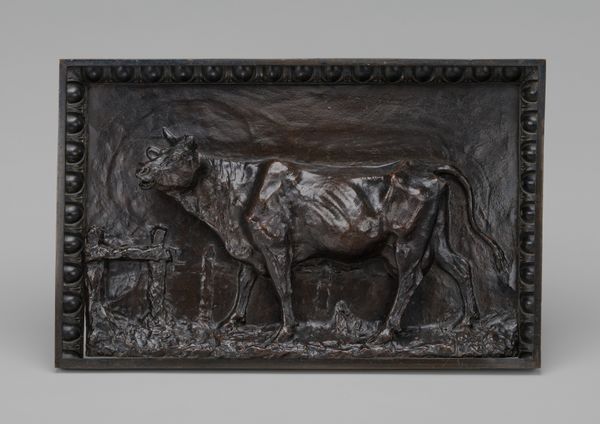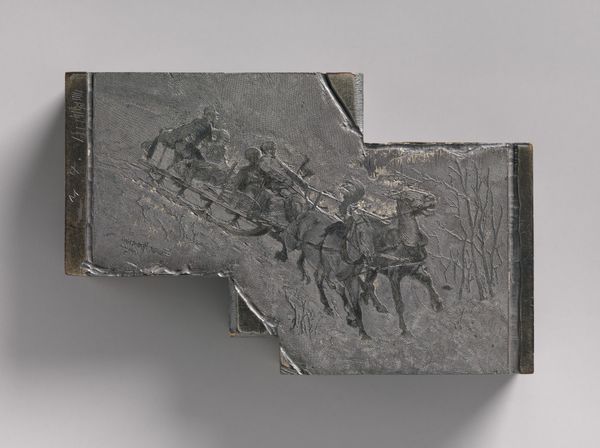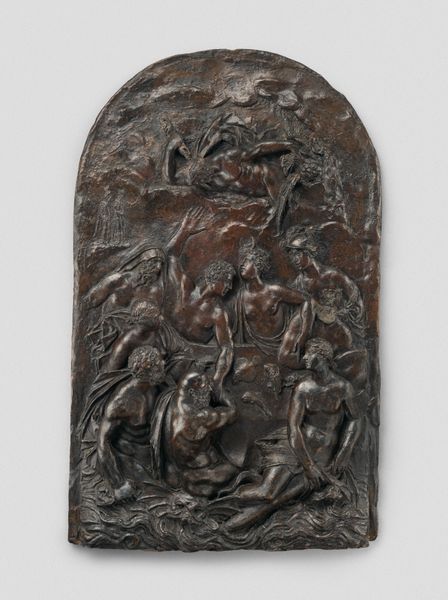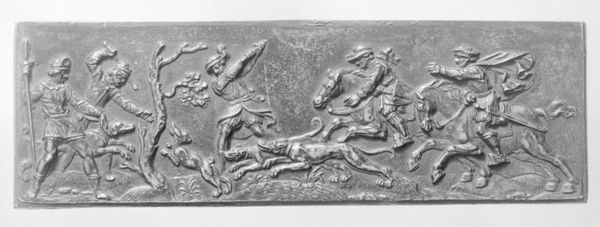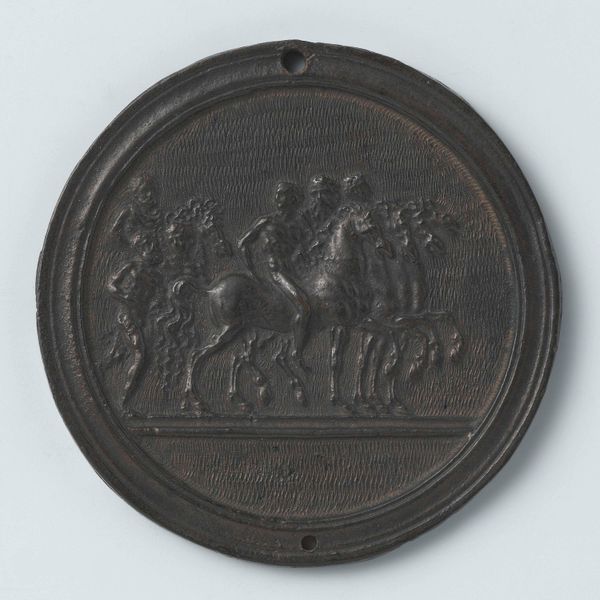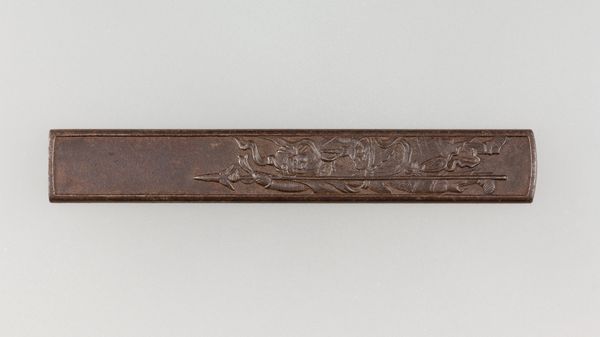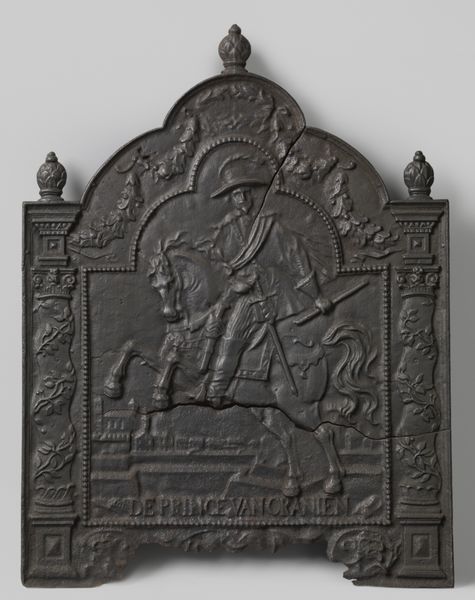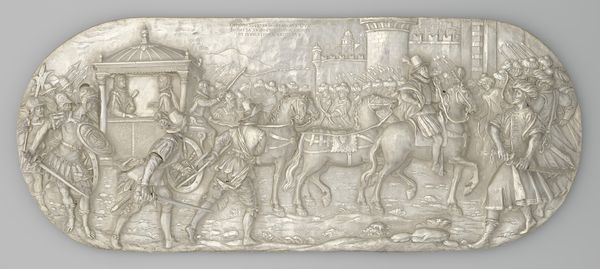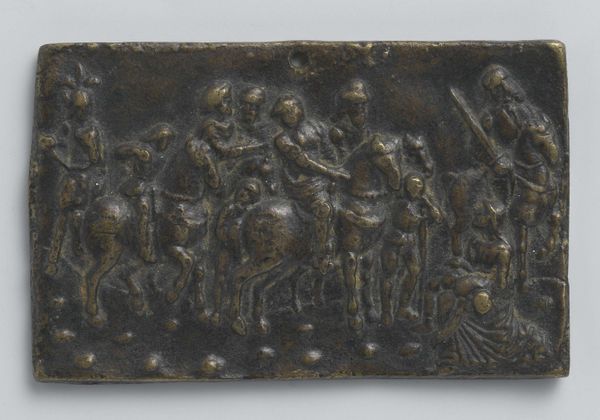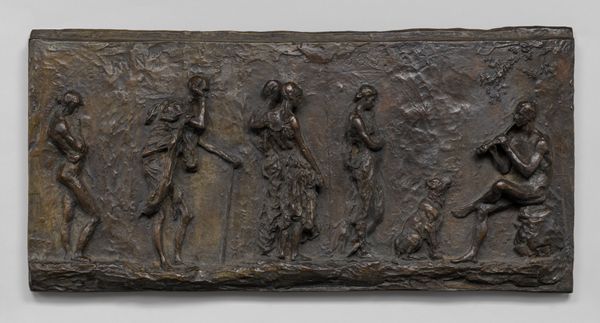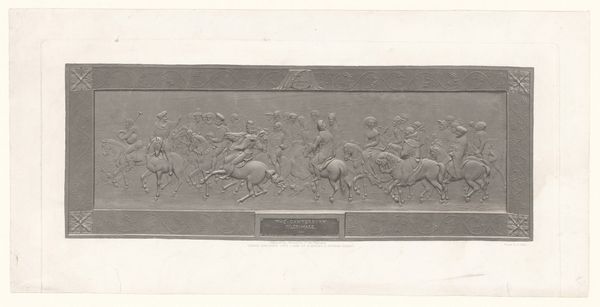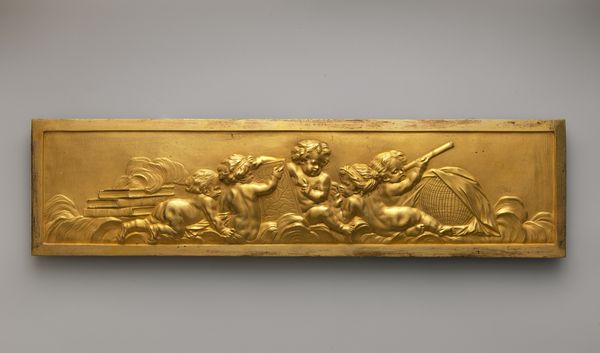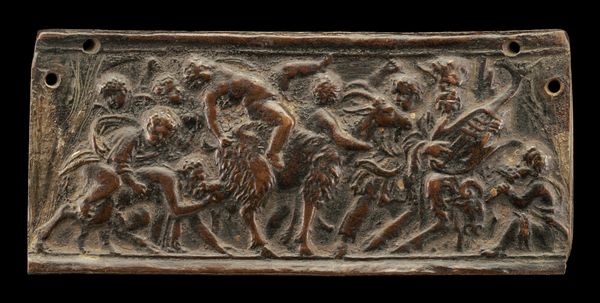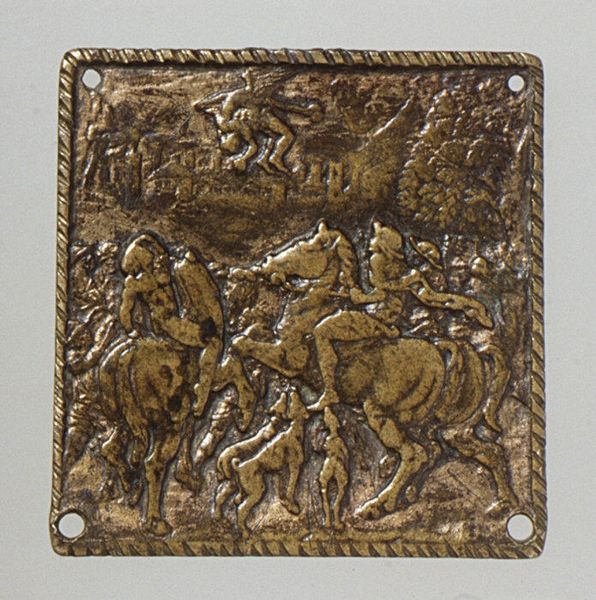
Cincinnatus at the Plough 1430 - 1465
0:00
0:00
carving, relief, bronze, sculpture
#
carving
#
relief
#
bronze
#
figuration
#
sculpture
#
carved
#
history-painting
#
decorative-art
#
italian-renaissance
#
organic texture
Dimensions: Overall (confirmed): H. 2 1/2 x W. 5 5/16 x D. 1/8 in. (6.4 x 13.6 x 0.4 cm)
Copyright: Public Domain
This bronze plaquette by Filarete, likely cast in fifteenth-century Italy, depicts Cincinnatus at the plough. It brings us to the story of a Roman citizen-soldier-farmer, a dictator who returns to his simple, agrarian life, ploughing his own fields. This act became an enduring symbol of civic virtue. The motif of the farmer-hero is not unique to Rome. We see echoes of it in the Greek myth of Actaeon, whose skills in hunting are undone by his curiosity, leading to his transformation and demise. Similarly, in ancient Egyptian art, scenes of daily life, including agriculture, are interwoven with funerary and religious beliefs, highlighting the cyclical nature of existence. Cincinnatus, the farmer, also becomes a leader, embodying a duality that touches our subconscious. He's a reminder of the natural cycle of life and death. Such images resonate across time, reborn in new forms, prompting us to delve into the depths of human emotion and cultural memory.
Comments
No comments
Be the first to comment and join the conversation on the ultimate creative platform.
